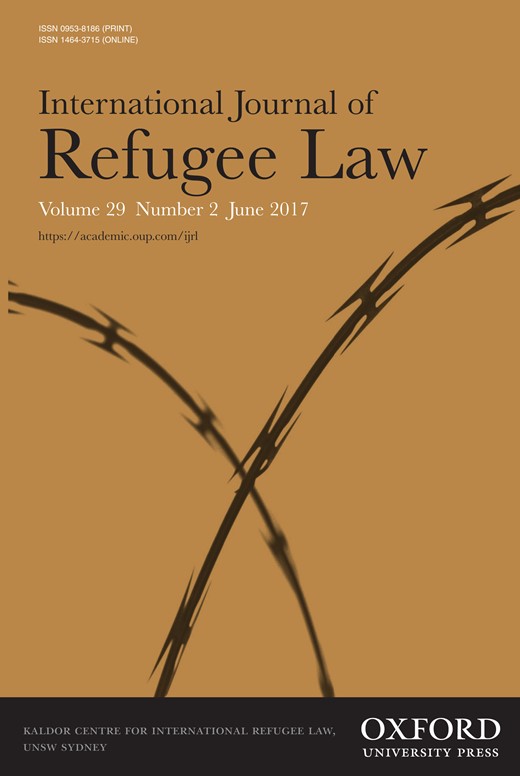-
Views
-
Cite
Cite
Geoff Gilbert, President Trump’s Executive Order: Denying Protection on Holocaust Memorial Day, International Journal of Refugee Law, Volume 29, Issue 2, June 2017, Pages 323–326, https://doi.org/10.1093/ijrl/eex020
Close - Share Icon Share
Extract
With an irony that did not go unnoticed, President Trump signed an Executive Order, Protecting the Nation from Foreign Terrorist Entry into the United States, on 27 January 2017,1 Holocaust Memorial Day, which denied entry to refugees and appeared to prioritize some religions over others. As Maryellen Fullerton’s article in this issue makes clear,2 litigation prevented that Executive Order from coming into effect and, on 6 March 2017, a new one was promulgated.3 That, too, as at 30 April 2017, is subject to litigation and its implementation is pending. This note looks briefly at the overall strategy as it pertains to refugees and asylum seekers and its compliance with international law. States can protect their borders, but there are limits on how that can be achieved.
Once again,4 reference is made in both Executive Orders to the events of 11 September 2001, despite the fact that no refugees were involved in crashing planes into the Twin Towers of the World Trade Center, the Pentagon, or the final one that came down in Pennsylvania. Almost by definition, refugee movements are unplanned and irregular, so when taking place on a large scale, some of those fleeing could (potentially) move in an attempt to hide their past and gain entry to territories from which they would otherwise be barred. This is why, from the outset, the 1951 Convention relating to the Status of Refugees has excluded from protection those with respect to whom there are serious reasons for considering that they have committed a war crime, a crime against peace, a crime against humanity, or a serious non-political crime.5 As such, terrorists would never qualify for refugee status. Refugees are a soft target with very little domestic ‘cost’ for a new President.6



